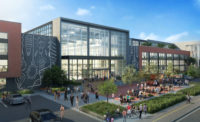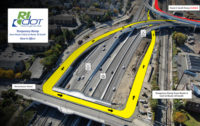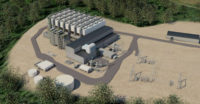Vicinity Energy says it took a critical step toward decarbonization by installing a massive electric boiler at its cogeneration plant in Cambridge, Mass.
Adding the 42 MW boiler last month to the 250 MW plant—which provides electricity, steam and hot and chilled water to large portions of Boston and Cambridge—puts the energy solutions company one step closer to electrification. Vicinity, which claims to have the most extensive portfolio of district energy systems in the country, will purchase renewable energy certificates to offset the boiler’s electricity consumption, and will be able to produce a carbon-free steam product this summer.
"This 42-MW electric boiler represents a significant leap forward in our decarbonization efforts for Boston, Cambridge and the Commonwealth,” said Bill DiCroce, CEO of Vicinity Energy, in a statement.
The company produces and distributes steam, hot water and chilled water to more than 230 million sq ft of building space in 12 cities through district energy systems and hopes to achieve net zero carbon emissions for its full portfolio by 2050.
Don Silvia, Northeast senior vice president of operations, says the 41,000-lb boiler manufactured by Vapor Power International represents low-hanging fruit toward electrification. “We can get there right away,” he says.
The second phase of decarbonization will be more involved. Vicinity plans to install a 35-MW industrial-scale heat pump complex that will enter service in 2027, as well as molten salt thermal battery storage, according to a statement.
“The industrial-scale heat pump requires more infrastructure, but will be another major step in getting the plant off of fossil fuels,” Silvia says.
The pump will draw 80,000 gallons of water per minute from the Charles River and use its thermal energy to produce steam. The system will be able to return water to the river at a colder temperature, which is a climate mitigation benefit as temperatures rise.
According to Silvia, these decarbonization strategies are straightforward because of the nature of district energy systems, which involve the production of thermal energy from a central location to be transported through underground pipes.
“[It will] take something like 14 substations to electrify the city [of Boston],” Silvia says. “Each substation takes around 10 years to permit and build. We're doing it our way. All you're doing is you're just changing a fuel source at one spot.”
Like many power plants, the Kendall facility has moved through multiple fuel transitions–from coal to oil to its current fuel source, natural gas. The company is taking advantage of its infrastructure and adapting it to the 21st century.
The Kendall facility will continue using its combined heat and power system but decrease its reliance on that technology as it approaches full electrification.





Post a comment to this article
Report Abusive Comment